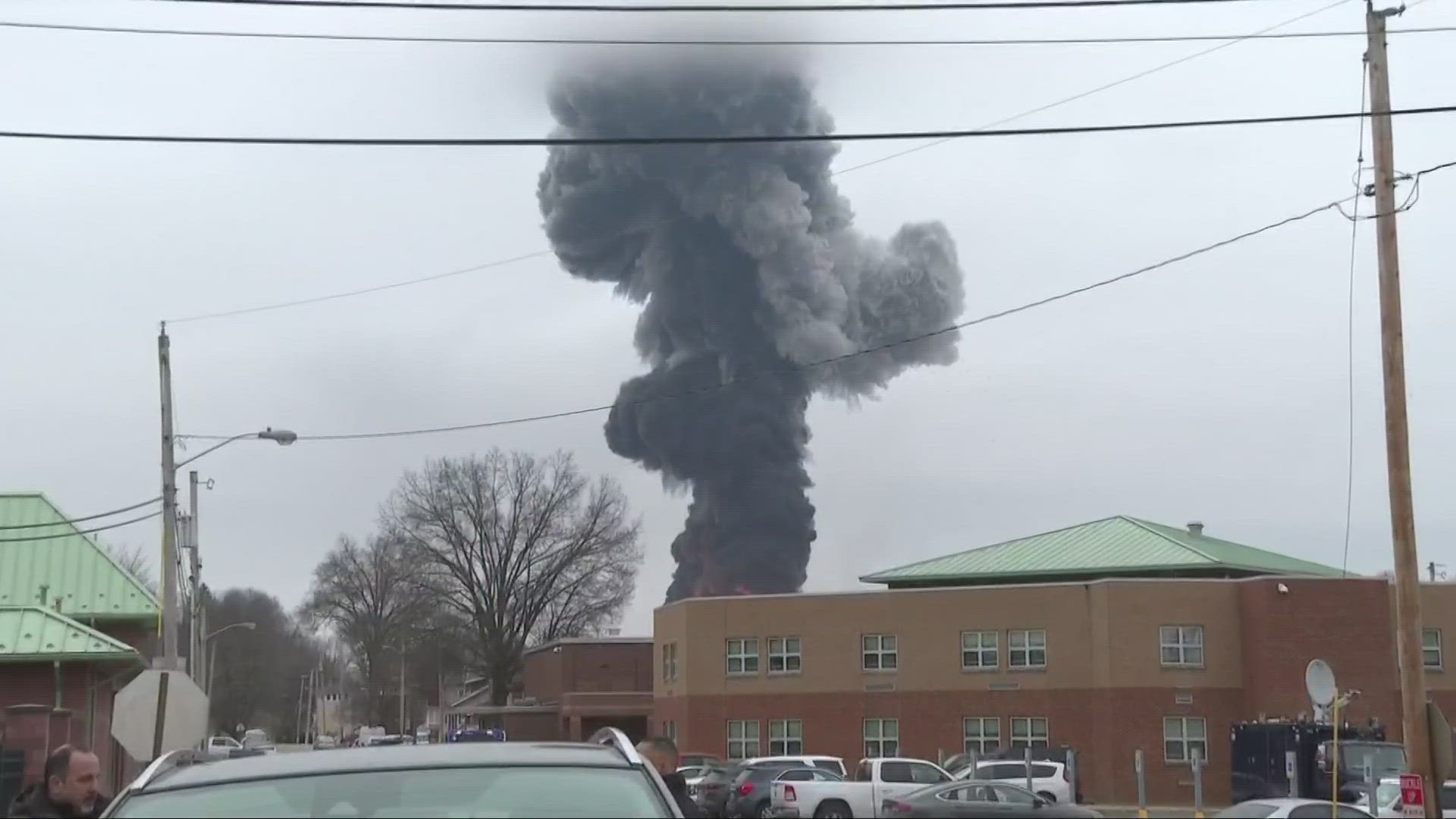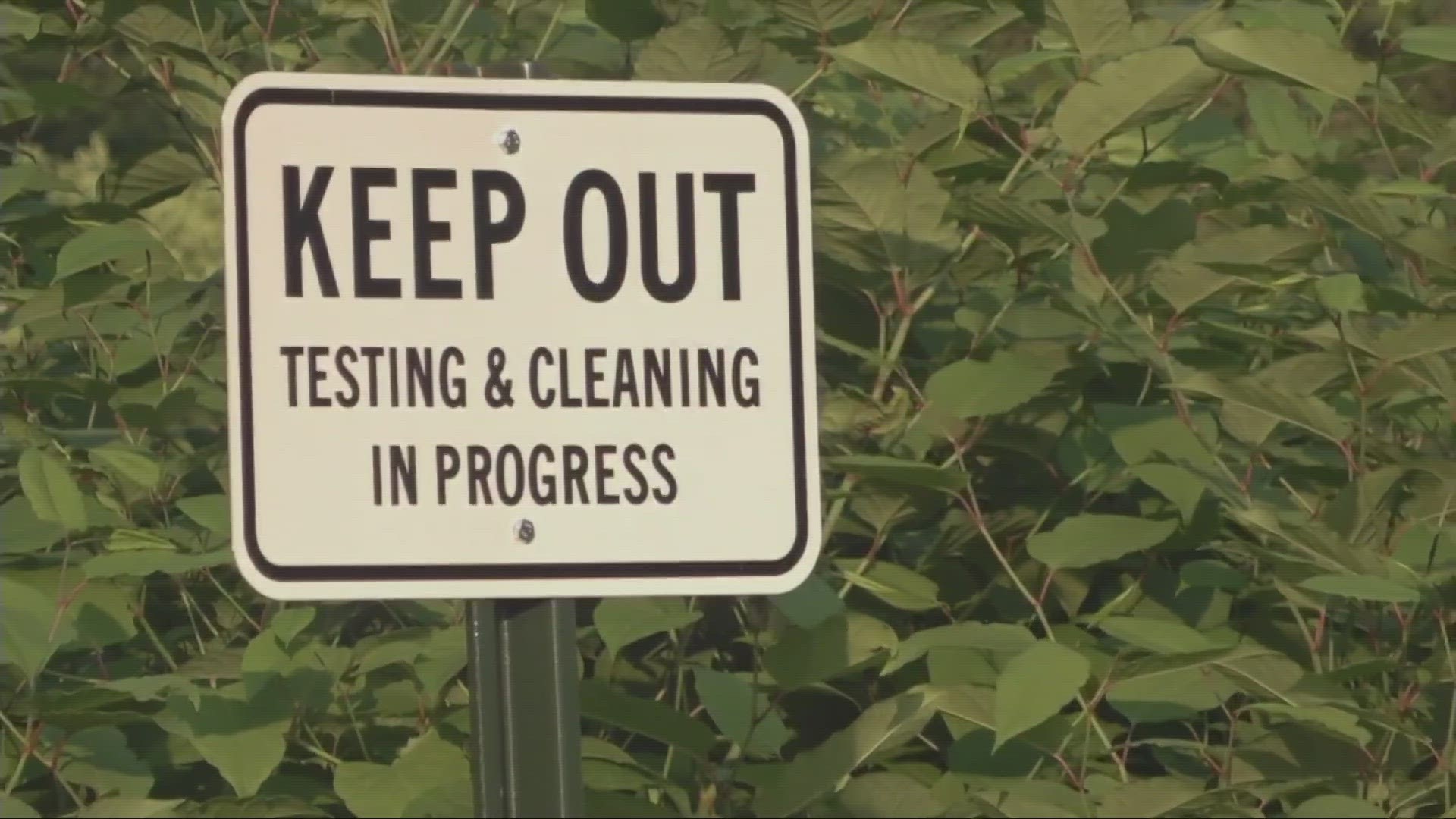EAST PALESTINE, Ohio — Officials from the National Transportation Safety Board (NTSB) were in East Palestine to hold two days of public hearings into the fiery train derailment that took place earlier this year.
The hearings took place on Thursday and Friday at East Palestine High School.
The NTSB gathered sworn testimony about the Feb. 3 Norfolk Southern Railway toxic train derailment, along with the subsequent hazardous material release and fires. The agency says the hearings are "a fact-finding step" of its safety investigation and the testimony will become part of the public record of the investigation.
"This hearing is an administrative, fact finding proceeding with no adverse parties," said NTSB chair Jennifer Homendy. "It is not our purpose to assign blame or determine the legal rights or liabilities of any person or entity."
Day 1 review from Thursday, June 22
Thursday's morning panel topic was "Hazard Communications and Emergency Responder Preparedness for the Initial Emergency Response," while the afternoon panel was "Circumstances that Led to the Decision to Vent and Burn Five Vinyl Chloride Tank Cars."
The witness panel for the early session included first responders and a Norfolk Southern employee, while the afternoon panel witnesses included first responders and employees of OxyVinyls and Norfolk Southern, among others.
Scott Deutsch with Norfolk Southern was a witness in the morning panel, and expressed his regrets to the residents of East Palestine and other communities.
"Norfolk Southern along with everyone involved in responding to the incident, focused on preserving the health and safety of the community and first responders," Deutsch said.
Deutsch was asked about Norfolk Southern's written emergency response plan, among other questions.
"Norfolk Southern has the emergency response plan on everybody's desktop in the company, it has plans for derailments, for hurricanes, for tunnel emergencies, all different types of emergencies that could occur in our territories," he said. "We also have the emergency response guidebook that states what resources we would bring."
East Palestine's fire chief, Keith Drabick, was also a witness, and answered questions about firefighter training and response. He said there has been more training since the derailment, including classes from Norfolk Southern. He also shared learnings from this situation.
"Lots of lessons learned, never have enough training, and you never have enough manpower," he said. "The majority of the fire departments in this country operate as volunteer fire departments. Men and women working full time jobs elsewhere, sacrificing their time, coming in the evenings, or days if they’re off. That’s detrimental to the country. I applaud them, I’ve been a volunteer firefighter for almost 40 years myself. Standards need to change in the country, standards need to change in our village.”
Railroad experts and contractors who helped with the emergency response said they believed they had no choice except to use explosives to blow a hole in the tank cars to release and burn the vinyl chloride. Moving the cars or draining the chemicals were not options.
Temperature readings and malfunctioning pressure relief valves led experts to believe a chemical reaction was taking place inside the tank cars that was building pressure, and that this could cause an explosion.
Drew McCarty with Specialized Profession Services said one of the tank cars “frankly scared the hell out of us” when it violently released vinyl chloride with a roar after hours of calm. McCarty said that, combined with his decades of experience, made him think the cars could explode.
Officials from OxyVinyls — the company that produced the vinyl chloride — said they were convinced that the chemical remained stable inside those cars and they tried to explain that to the railroad before officials decided to vent the cars and burn the vinyl chloride. Tests the company did later showed no evidence that the reaction had occurred.
But Norfolk Southern's Robert Wood said even if there wasn't a chemical reaction, officials were still concerned that the tank cars could fail and release the vinyl chloride.
“If that car fails, that is a large cloud of liquefied flammable gas that’s going to light off and can have devastating consequences,” Wood said.
The fire chiefs said the initial response to the derailment was complicated because the radios used by the different departments don't work with each other. It also took time for emergency responders to discover exactly what the train was carrying because the first firefighters on scene didn't have access to the AskRail app that railroads developed to provide that information. The train crew that also had that information was a mile away after moving the locomotive and didn't immediately connect with first responders.
Drabick said it took about 45 minutes for his department to discover what was in the cars. Homendy said the railroad didn't immediately provide that information to dispatchers and officials who requested it.
Eventually, officials learned about the dangerous nature of the cargo and pulled firefighters back from the derailment site. They also ordered the evacuation of all homes within one mile.
You can watch Thursday's hearing in the video below:
Day 2 review from Friday, June 23
Jason Cox with the Transportation Communications Union testified Friday during the second day of the NTSB hearing that the railcar that caused the derailment wasn’t inspected by Norfolk Southern even though it passed through three railyards where qualified inspectors were working.
Cox said the lack of inspections reflects the changes Norfolk Southern has made since 2019 to slash the ranks of car inspectors and other employees, and that the company increasingly uses a loophole in federal regulations to rely on train crews to complete inspections instead of experts trained to do that work. He said train crews look at just 12 points on a rail car instead of the 90 to 105 points a carman checks.
Furthermore, Cox said, carmen are pushed to inspect a car in just one minute instead of the roughly three minutes they had before the railroad starting making operational changes over the past four years. Norfolk Southern's representative at the hearing, Jared Hopewell, denied the railroad has a time limit for inspections. Cox cited a deposition from a Norfolk Southern manager that confirmed a one-minute goal.
“This firewall of safety has been severely compromised,” Cox said during the hearing in East Palestine.
Norfolk Southern's Hopewell and Mike Rush with the Association of American Railroads trade group that sets standards for the industry said railroads are taking the Ohio derailment seriously and making changes to prevent any future derailments, including adding hundreds more trackside detectors that are supposed to spot overheating bearings before they cause a crash.
The NTSB has said the overheating bearing triggered an alarm from one of those detectors in Ohio, but that the crew didn't have a chance to stop the train before the derailment.
Rush said nearly every hazardous materials shipment that railroads haul arrives safely, but even one derailment involving those chemicals can be disastrous.
“The Feb. 3 derailment is a stark reminder of the railroad industry’s responsibility to the communities in which we operate. The railroads are taking what happened here with the utmost seriousness,” Rush said.
Federal regulators and Congress have called on the industry to do more.
One recommendation is to speed up upgrades of a certain model of older tank cars to make them less likely to rupture and leak during a derailment. Homendy pointed out that rule change would have affected only one of the 38 cars that derailed in Ohio. And all of the vinyl chloride cars that officials blew open were a different type of tank car.
William Schoonover with the Pipelines and Hazardous Materials Safety Administration said his agency is considering expanding what are designated as high-hazardous trains under 2015 rules that were crafted after a rash of derailments involving flammable liquids such as crude oil and ethanol. Congress is also considering applying those safety rules to additional commodities.
A high-hazardous flammable train must have either a block of 20 or more flammable liquid cars or at least 35 flammable liquid cars in all. This Ohio train didn't qualify.
Members of the NTSB questioned the wisdom of letting the railroad industry largely self-regulate — the Association of American Railroads trade group sets recommended standards — but Rush said federal regulators have input on the group's rules.
You can watch Friday's hearing in the video below:
After this week's hearings, the NTSB says it will use the information gathered to complete the investigation, determine probable cause, and make recommendations to improve transportation safety. The full investigation will take approximately one year to 18 months from the date of the derailment to complete, meaning the final report would not be out until at least February of 2024.
“The communities most affected by this tragedy deserve as much insight as possible into our investigation, which is why we’re holding an investigative hearing in East Palestine,” said Homendy. “While we unfortunately cannot change what happened that day, our entire agency is committed to carrying out our mission, which doesn’t end when we get to the bottom of what happened and why it happened—we’ll also work vigorously to prevent it from ever happening again.”
In its preliminary report released on Feb. 23, the NTSB said the 149-car train crashed because of a failed wheel bearing on the 23rd rail car. Records show the bearing had been overheating for about 30 miles before the wreck, but the crew was not alerted to stop the train until a tracker detecting the piece of equipment at more than 250 degrees Fahrenheit above normal temperature. At milepost 49, the bearing was flagged at 263 degrees above an acceptable temperature, sending an alarm to the crew inside the lead locomotive.
The NTSB says the engineer did indeed apply the breaks, but to no avail, as the axle broke and 38 of the cars derailed. Once the train came to a stop, the crew alerted authorities of a possible derailment and fire before moving the engines away from the scene.
"We have no evidence that the crew did anything wrong," Homendy declared at the time. You can read the preliminary report below.



